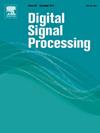Single image deraining using asymmetric feature pyramid context-aware network
IF 2.9
3区 工程技术
Q2 ENGINEERING, ELECTRICAL & ELECTRONIC
引用次数: 0
Abstract
Existing image deraining algorithms have challenges of accurately identifying the size and density of rain streaks, which can lead to incomplete removal and difficulties in restoring high resolution images. To address these challenges, we propose a context-aware network based on an asymmetric feature pyramid (CA-AFPN) for effective rain streak removal. The CA-AFPN is composed of feature extraction module, image restoration module, and a multi-scale feature fusion module. In the feature extraction module, the key features are extracted using a channel and self-attention (CS-Attention) module, which can perform downsampling on the image to capture color, semantic, and spatial information from various feature layers. The image restoration module employs the context-aware deep upsampling (CADU) technique to globally and dynamically restore the original features. Additionally, horizontal connections between the two modules integrate shallow physical positioning and deep semantic information, expanding the network receptive field and spatial context. Finally, the multi-scale feature fusion module (MFF) utilizes a residual network and dilated convolution layers to merge feature information across different scales for reconstructing the rain-free image. Extensive experimental results demonstrate that the proposed method is effective not only on synthetic datasets but also achieves superior performance on real-world data.
求助全文
约1分钟内获得全文
求助全文
来源期刊

Digital Signal Processing
工程技术-工程:电子与电气
CiteScore
5.30
自引率
17.20%
发文量
435
审稿时长
66 days
期刊介绍:
Digital Signal Processing: A Review Journal is one of the oldest and most established journals in the field of signal processing yet it aims to be the most innovative. The Journal invites top quality research articles at the frontiers of research in all aspects of signal processing. Our objective is to provide a platform for the publication of ground-breaking research in signal processing with both academic and industrial appeal.
The journal has a special emphasis on statistical signal processing methodology such as Bayesian signal processing, and encourages articles on emerging applications of signal processing such as:
• big data• machine learning• internet of things• information security• systems biology and computational biology,• financial time series analysis,• autonomous vehicles,• quantum computing,• neuromorphic engineering,• human-computer interaction and intelligent user interfaces,• environmental signal processing,• geophysical signal processing including seismic signal processing,• chemioinformatics and bioinformatics,• audio, visual and performance arts,• disaster management and prevention,• renewable energy,
 求助内容:
求助内容: 应助结果提醒方式:
应助结果提醒方式:


